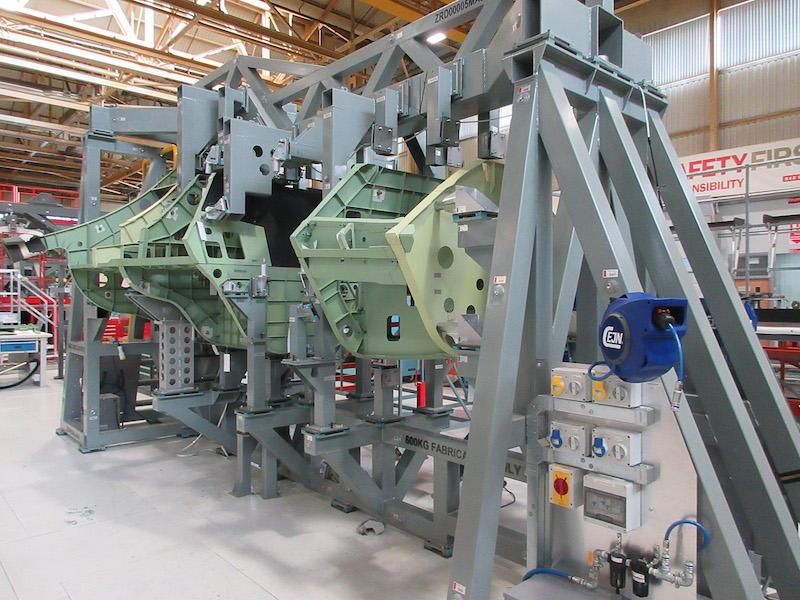
Half the weight of the supersonic demonstrator is now in manufacture or assembly.
FARNBOROUGH—BAE Systems has begun assembly of the supersonic demonstrator that will support the development of the Global Combat Air Program’s (GCAP) fighter.
With the demonstrator’s design passing a critical design review (CDR) in May, half the aircraft’s weight is now in manufacture or assembly, with the front center, rear and wings being built, BAE Systems officials say. The British defense prime is using additive manufacturing and design processes for the primary structural components, with most parts being produced in the UK.
“The flying technology demonstrator is a vital initiative for developing national skills and advanced technology, ensuring the UK remains a world leader in the design, production, test and certification of combat aircraft,” says Paul Wilde, head of Tempest at BAE Systems.
The company also has confirmed that the aircraft will feature an “integrated payload bay” from which weapons will be released, helping to rebuild competence—the last tactical combat aircraft built in the UK with a weapons bay was the Blackburn Buccaneer, which first flew in 1958.
The Tempest demonstrator is a UK sovereign effort, but the lessons learned from the initiative will feed into the trinational GCAP program with Italy and Japan. Japan has already flown its own future fighter demonstrator, the Mitsubishi X-2, which first took flight in 2016. Lessons from the development of that demonstrator are being fed into what Herman Claesen, managing director of Future Combat Air Systems (FCAS) at BAE Systems, calls a “benefits realization register,” with inputs feeding into the GCAP master schedule.
Structural parts of the Tempest demonstrator have been produced through an additive process called hot isostatic press, in which powdered Titanium is forced together under heat and pressure, saving on material waste and significantly reducing the lead times associated with forgings. Engineers also have designed components for additive manufacture, with Wilde noting, “There are parts on the aircraft that you can’t make in other ways now than using additive processes.”
In addition, test pilots from BAE Systems, Rolls-Royce and the Royal Air Force have flown 215 hr. of simulated flights on the demonstrator’s simulator.
The aircraft also is expected to be the first flying platform to make use of the Pyramid avionic design architecture, intended to make it more adaptable.
With the high level of security around the program and GCAP in general, the latest disclosures partially lift the veil on the demonstrator’s development progress.
No details have emerged about the demonstrator aircraft’s size, weight or planform, although BAE has previously shown the extraordinary length of the aircraft’s serpentine ducts that will feed the two Eurojet EJ200 engines being provided by Rolls-Royce. The scale of those ducts would suggest the aircraft will be around a third larger than the Eurofighter.
Current plans call for the demonstrator to fly within three years.
At the heart of the demonstrator effort is the desire to restore national skills and capabilities, especially as the UK has not developed or built a clean-sheet military aircraft alone for several decades. “This is not just about building a new aircraft,” Wilde says, “but testing and commissioning and proving all those systems in order to generate the evidence required for airworthiness authorities. That’s a really important part of the next step ahead of us.”
Air Cdre. Martin Lowe, program director of Future Combat Air Systems at the UK Defense Ministry, adds, “We hope this demonstrator will bring a whole generation of new engineers and other folk in aerospace into this sector to support the long-term program and realize the much wider benefits in the wider economy and in the long term.”
